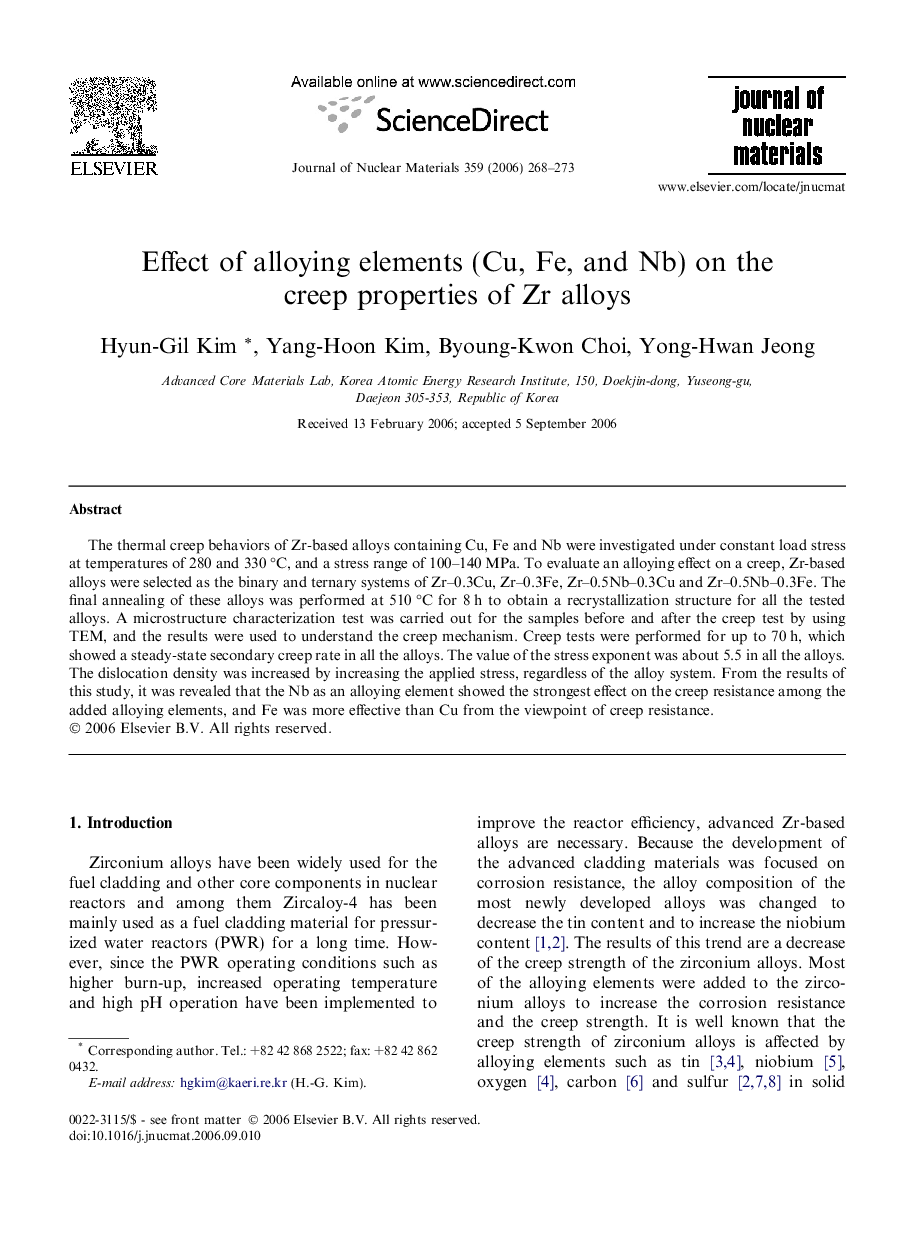| Article ID | Journal | Published Year | Pages | File Type |
|---|---|---|---|---|
| 1569636 | Journal of Nuclear Materials | 2006 | 6 Pages |
The thermal creep behaviors of Zr-based alloys containing Cu, Fe and Nb were investigated under constant load stress at temperatures of 280 and 330 °C, and a stress range of 100–140 MPa. To evaluate an alloying effect on a creep, Zr-based alloys were selected as the binary and ternary systems of Zr–0.3Cu, Zr–0.3Fe, Zr–0.5Nb–0.3Cu and Zr–0.5Nb–0.3Fe. The final annealing of these alloys was performed at 510 °C for 8 h to obtain a recrystallization structure for all the tested alloys. A microstructure characterization test was carried out for the samples before and after the creep test by using TEM, and the results were used to understand the creep mechanism. Creep tests were performed for up to 70 h, which showed a steady-state secondary creep rate in all the alloys. The value of the stress exponent was about 5.5 in all the alloys. The dislocation density was increased by increasing the applied stress, regardless of the alloy system. From the results of this study, it was revealed that the Nb as an alloying element showed the strongest effect on the creep resistance among the added alloying elements, and Fe was more effective than Cu from the viewpoint of creep resistance.
